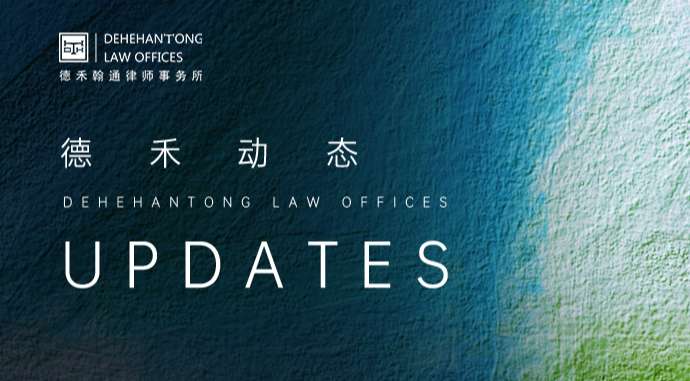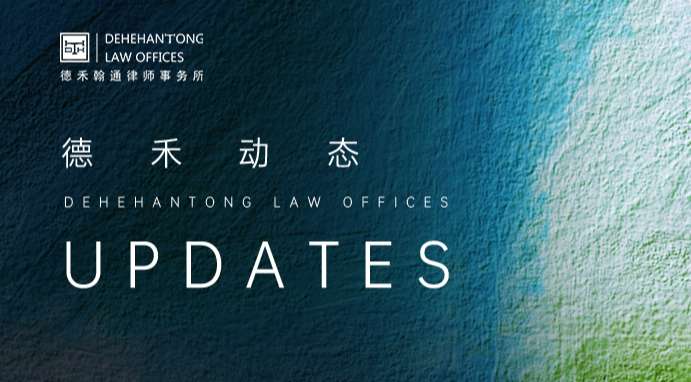Hotspots of ESG Compliance under Social Issues: The Transformation from Responsibility to Competitiveness
01 Introduction: Social Issues are Not pushovers
In the past, when discussing ESG, social issues were often regarded as "face-saving projects" or "adding the finishing touch" - things like labor rights and rural revitalization were just for show. But the reality in 2025 is that the "social dimension" in ESG has long since shifted from a "voluntary option" to a "mandatory red line".
Simply put, social issues are the "human feelings and principles" that cannot be avoided in business operations: Have employees been treated fairly? Are the rights and interests of workers in the supply chain guaranteed? Will algorithms take advantage of delivery workers? Is rural assistance genuine work or just a show? These seemingly "soft" issues now lead to fines, lawsuits, and even a sharp drop in valuation as soon as they are crossed.
For senior executives, the current issue is not about "whether to do it or not", but rather "how to do it without falling into traps and gain points".
02 Six Compliance Hotspots in 2025: Each Conceals Both "Mines" and "Opportunities"
1. Labor rights: The supply chain Hides a "time bomb"
Good treatment for one's own employees does not guarantee everything will be fine; problems in the supply chain can still "come knocking". In April 2025, a mining subsidiary was fined 290,000 yuan for illegal facts such as failing to conduct regular inspections of safety equipment and not providing labor protection supplies that meet national or industry standards to its employees.
From the "Xinjiang Cotton incident" to the labor rights issues in Apple's supply chain, labor rights have become an unavoidable compliance topic for enterprises. The introduction of the EU Supply Chain Due Diligence Act (officially known as the Corporate Sustainability Due Diligence Directive, CSDDD) has further promoted the improvement of global supply chain human rights standards. Some enterprises need to extend human rights due diligence to suppliers at level three or above. If there is a violation, the fine can be up to 5% of the global annual turnover. And it may be excluded from public procurement.
Chinese enterprises need to establish a systematic "human rights due diligence" mechanism, integrating human rights risk assessment into procurement, production and partner management in line with the domestic "National Human Rights Action Plan". For companies that have failed to establish an effective risk management system, have not issued a human rights policy statement, or have been found to have significant labor or human rights violations (such as forced labor or child labor) in their supply chains, even if the problems occur at the distant supplier end, the enterprises still need to take responsibility.
2. New employment form: Platforms must provide riders with a safety net
The "social security gap" problem of ride-hailing drivers and food delivery workers highlights the absence of labor protection under the new economic model. In 2025, the Ministry of Human Resources and Social Security issued new regulations, which put forward clear requirements for the protection of the rights and interests of platform workers. For instance, for industries such as transportation, timely delivery, and intra-city freight transportation, it set clear benchmark payment amounts for each order and established a floating mechanism. For platform enterprises, this means that they need to adjust their internal employment management and algorithm rules as soon as possible to meet compliance requirements. Platform enterprises should disclose the risks of "non-standard labor relations" and actively participate in the pilot program of occupational injury protection, incorporating occupational protection into the ESG disclosure system.
3. Rural Revitalization: Don't Let "Public Welfare" Turn into "Greenwashing
Cases such as Pinduoduo's "Rural Land Cloud Group Buying" and Alibaba's "Hot Land Plan" show that rural revitalization has become an important scene for enterprises to fulfill their social responsibilities. However, enterprises should pay attention to quantifying their social contributions. If they merely donate some money and take a photo, it is very likely to be regarded as "putting on a show", raising doubts about "greenwashing" (greenwashing refers to enterprises exaggerating their social responsibility investments, commitments or achievements with the aim of misleading the public or investors).
Successful cases include Hongji Holdings, which, through cooperation with the Hong Kong Stock Exchange, linked rural revitalization projects with equity returns, built "prefabricated building factories" to create jobs, and publicly disclosed the return data through the Hong Kong Stock Exchange system. The ESG guidelines of the Hong Kong Stock Exchange (commonly known as the "Common Prosperity" guidelines) clearly stipulate that contributions must be quantified, such as "how many farmers' income has been increased" and "how much training funds have been invested", providing a verifiable and disclosing template for rural revitalization projects.
4. Gender equality: A compensation of 3,200 yuan for one sentence
In May 2025, a company in Shanghai was recruiting legal staff. The recruitment advertisement did not show any gender restrictions, but it rejected female job seekers on the grounds of "wanting to hire male colleagues". Eventually, the company was ordered by the court to pay 3,200 yuan in compensation. This case has sounded the alarm for workplace equality. Although there is no unified global fine at present, class-action lawsuits against Gender Pay Gap and recruitment discrimination are still ongoing in the United States and Europe. The latest trend is that investors demand that the DEI (Diversity,Equity&Inclusion) data disclosure of corporate boards and executive management be more specific and quantified, such as gender diversity on boards (e.g., a 30% female proportion). Other aspects such as workplace sexual harassment prevention mechanisms and the disclosure of gender pay gaps are also becoming hard indicators for corporate compliance. Article 1010 of the Civil Code of China also provides a legal basis for the prevention and control of sexual harassment, and enterprises should establish internal systems based on this.
5. Data Ethics: Algorithms that deceive people will lead to legal trouble
The "overtime penalty" algorithm for food delivery riders and the gender bias of AI recruitment tools reveal the ethical risks behind the data and algorithms. The Personal Information Protection Law of the People's Republic of China stipulates the boundaries of sensitive information. The collection of sensitive data must meet the "minimum necessity" and users' privacy cannot be arbitrarily crawled. The EU's "Artificial Intelligence Act" (also known as the "AI Act") clearly stipulates the transparency of algorithms, requiring them to be "explainable". Enterprises should establish an "AI Ethics Committee" to conduct compliance reviews and social impact assessments of algorithms.
6. Compliance Risk Mapping: From "Public Opinion" to "Litigation
Social issues have a very strong "public opinion amplifier" effect. A trending topic on Weibo or a revelation on Xiaohongshu can both trigger a crisis of public trust. Investors have also begun to vote with their feet - MSCI once downgraded the rating of a certain automotive group due to employee treatment issues.
What is more serious is that public interest litigation and class action litigation are on the rise. Environmental protection organizations, women's federations, disabled persons' federations and other institutions have begun to push enterprises to fulfill their social responsibilities through litigation. Class action lawsuits such as the "social Security case of Food Delivery Workers" in Chongqing remind enterprises that social issues are no longer merely moral problems but also legal ones.
03 Executive Practical Guide: 3 Steps to Ensure Compliance with Social Issues
In the face of the complexity and dynamics of social issues, enterprises should establish a "social issue risk radar", and through public opinion monitoring, stakeholder interviews and policy scanning, promptly identify risk signals. On this basis, the "three-step method" can be followed to promote ESG compliance in the social dimension:
The first step: Build a "risk radar" to identify potential risks in advance
Don't wait until something goes wrong to put out the fire! We can learn from leading enterprises to do two things:
(1) Weekly policy review: Keep a close eye on the new regulations issued by the Ministry of Human Resources and Social Security and the China Securities Regulatory Commission, and pay more attention to various guidelines of the stock exchanges, such as the key performance indicators in the "social" category in the "Environmental, Social and Governance Reporting Guidelines" of the Hong Kong Stock Exchange.
(2) Check public opinion every month: Search for your own brand on Xiaohongshu and Weibo to see what employees and consumers are joking about, such as "recruitment discrimination", "too much overtime", etc. For high-risk industries, it is also necessary to pay attention to the reports of third-party labor watch organizations and NGO exposures.
Step Two: Embed compliance into the system, not just hang it on the wall
(1) Supply chain: Distribute "Human rights questionnaires" to suppliers, focusing on reviewing labor protection and overtime hours to avoid large fines.
(2) Internal management: Incorporate "the proportion of female managers ≥30%" and "zero tolerance for sexual harassment complaints" into KPIs and link them to executive compensation.
(3) Algorithms: Establish an "AI Ethics Committee" to review algorithms once every quarter. For instance, food delivery platforms can add a "weather delay buffer mechanism", etc.
Step 3: Disclosure should be "based on pictures and facts", not just empty slogans
Don't just say "We attach great importance to rural revitalization". Instead, be like Hongji Holdings: it has clearly quantified "built two factories in Yunnan, driving 800 farmers to increase their annual income by 20,000 yuan", and attached the verification report from the Hong Kong Stock Exchange. The following are the standards that can be directly used for reference:
(1) The manufacturing industry can refer to GRI403 (Occupational Health Indicators) : It not only focuses on post-accident statistics but also emphasizes the establishment of a preventive management system and the comprehensive impact on employee health, making the data comparable.
(2) The Internet industry can refer to the SASB standard (Data Privacy Requirements) : The SASB standard is industry-specific and meets the requirements of specific and quantified disclosure.
Emergency Avoidance: What to do when encountering Complaints?
Don't rush to defend yourself just yet! The company mentioned above, which had a clear gender requirement for job seekers, initially claimed to "kindly avoid the reasons for rejection", but ended up losing the lawsuit instead.
The correct approach is:
(1) Response within 24 hours: Indicate the enterprise's attitude of investigation and attention at the first moment.
(2) Initiate a fair investigation: Immediately launch an internal investigation or entrust an external lawyer to conduct a fair investigation to verify the authenticity of the complaint content and the legal risks involved.
(3) Provide a solution within 3 days: Based on the investigation results, offer a clear solution. If there is any negligence, apologize and compensate. If there is a problem with the algorithm, adjust it immediately.
04 Conclusion: Are social issues "costs" or "opportunities to make money"?
The 290,000-yuan fine imposed on a certain mining subsidiary and the 3,200-yuan compensation from a company in Shanghai are both reminders that social issues are not about "spending money to buy reputation", but about "saving money to avoid risks and making money to seize opportunities". It is suggested that enterprises make early plans and transform social issues into "strategic dividends". In the ESG battlefield of 2025, whoever incorporates social issues into their DNA will be able to obtain the "pass" to capital and the market.















